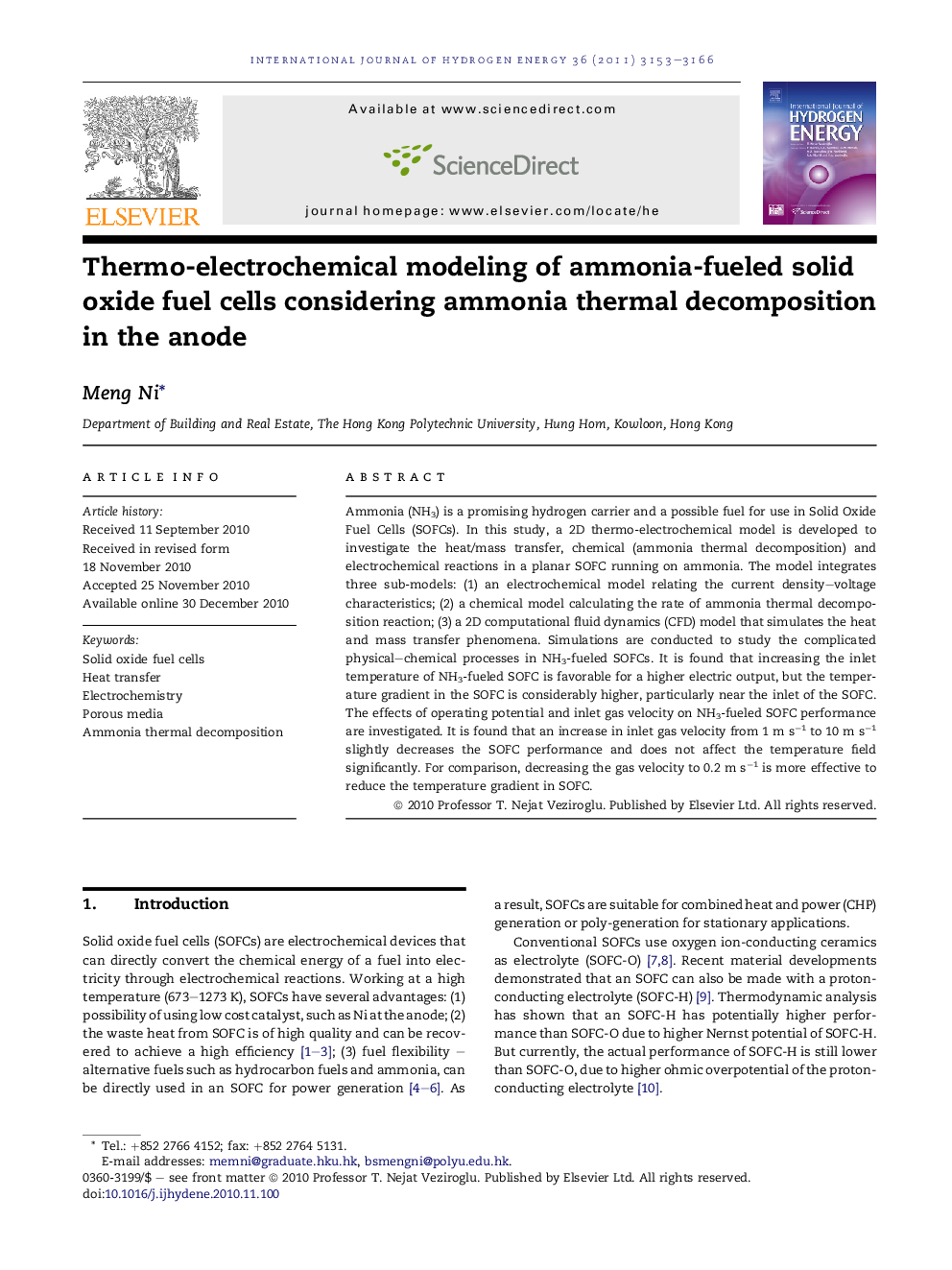| Article ID | Journal | Published Year | Pages | File Type |
|---|---|---|---|---|
| 1276429 | International Journal of Hydrogen Energy | 2011 | 14 Pages |
Ammonia (NH3) is a promising hydrogen carrier and a possible fuel for use in Solid Oxide Fuel Cells (SOFCs). In this study, a 2D thermo-electrochemical model is developed to investigate the heat/mass transfer, chemical (ammonia thermal decomposition) and electrochemical reactions in a planar SOFC running on ammonia. The model integrates three sub-models: (1) an electrochemical model relating the current density–voltage characteristics; (2) a chemical model calculating the rate of ammonia thermal decomposition reaction; (3) a 2D computational fluid dynamics (CFD) model that simulates the heat and mass transfer phenomena. Simulations are conducted to study the complicated physical–chemical processes in NH3-fueled SOFCs. It is found that increasing the inlet temperature of NH3-fueled SOFC is favorable for a higher electric output, but the temperature gradient in the SOFC is considerably higher, particularly near the inlet of the SOFC. The effects of operating potential and inlet gas velocity on NH3-fueled SOFC performance are investigated. It is found that an increase in inlet gas velocity from 1 m s−1 to 10 m s−1 slightly decreases the SOFC performance and does not affect the temperature field significantly. For comparison, decreasing the gas velocity to 0.2 m s−1 is more effective to reduce the temperature gradient in SOFC.
